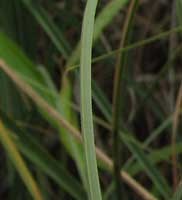
Welcome to the Sawgrass Prairie! Before we can really talk about this habitat, we should first take a look at the plant that helps to give this habitat its name: sawgrass. Sawgrass is a tall plant that if examined closely will reveal tiny ridges, or teeth, along the length of its sides. If you're not careful, these ridges could give you a small cut (somewhat like a paper cut), as the edges can be pretty sharp. Imagine that you are walking through a field of sawgrass. It is so tall, it brushes against your arms. It is so thick, you feel as if you are wading through a sea of grass. Remember, each blade of sawgrass has those tiny teeth on it that could cut you. It’s no wonder we call it SAWgrass! Those tiny ridges or teeth feel like tiny little saws. 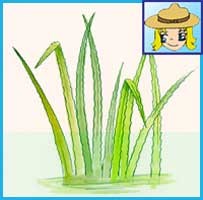
By the way, did you know that sawgrass isn’t really a grass? It actually belongs in the a group called sedges. So really, you should be calling sawgrass a saw-sedge (try and say that three times fast). Sounds kind of like you're saying Sausage! Imagine how confused our visitors would be, if we were to tell them that the Everglades contains huge fields of sawsedge, or if we told them that sawsedge is a plant that grows here naturally. Sounds a little funny when you say it out loud! 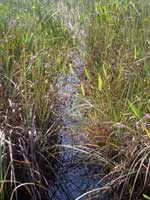
The Sawgrass Prairie is also known as the sawgrass marsh (see picture). This habitat stays wet most of the year. It’s only when the Everglades enters its Dry season that we start to see water levels drop and the ground becomes visible. Sawgrass is the most dominant or common plant found within this habitat, but if you are careful in your observations you can also spot many other types of plants such as: 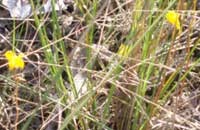
Bladderwort is a carnivorous plant, typically sporting a flower (white, purple, or yellow) and hundreds of tiny little bladders. These bladders help with floating and feeding as they are used to capture unsuspecting aquatic insects. 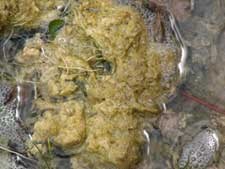
If you look closely at the ground in the sawgrass prairie, you'll see something else. It looks like a spongy greenish mass of mud, but smells like wet grass. This living mud is called periphyton (pronounced pair-ee-fi-ton) and is a mixture of tiny organisms, including bacteria, cyanobacteria, and green algae. Together periphyton uses the sun's energy to produce food. Since it forms the base of many of the Everglades food chains, that makes it a very important member of the Everglades team. 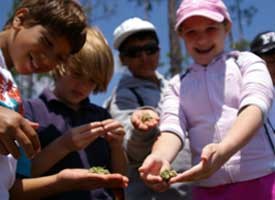
Periphyton can be a lot of fun to explore:
Did you know that periphyton could even be called a miniature habitat since it contains food, water, shelter, and space for small critters? 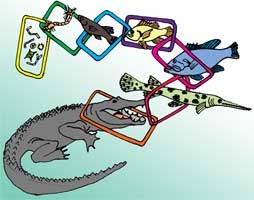
Many aquatic insects, snails, and others, eat periphyton. Here is another example of a chain of animals and plants that form the food chain! These animals are, in turn, eaten by larger predators such as fish, which are then eaten by turtles, snakes, birds, or even alligators. Each animal then becomes part of the bigger picture, or the Everglades food web. A food web, is a bigger connection of many many interesting food chains. To return to the previous page click on Habitat and to return to the main |
Last updated: February 1, 2018
